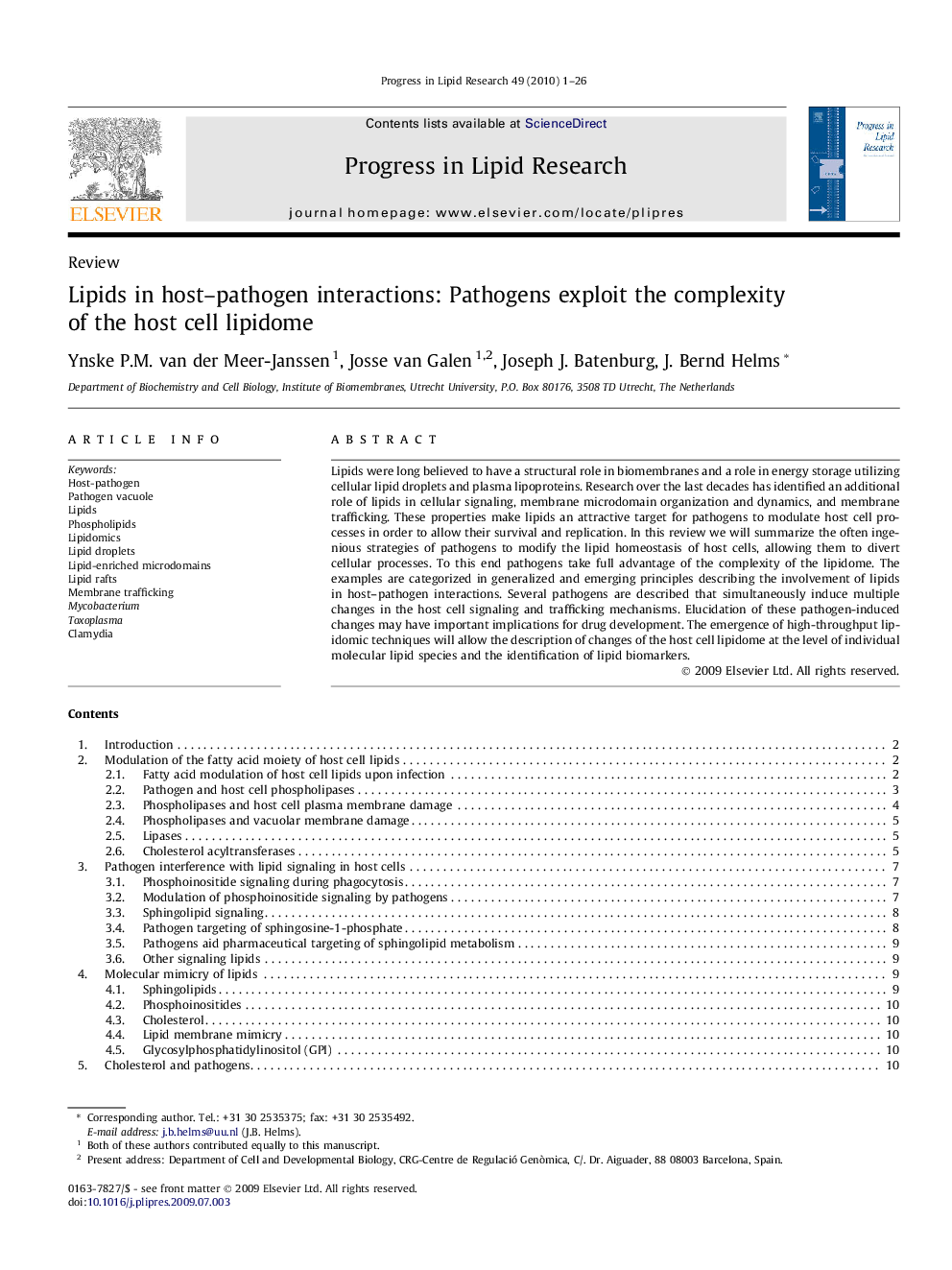| Article ID | Journal | Published Year | Pages | File Type |
|---|---|---|---|---|
| 2019247 | Progress in Lipid Research | 2010 | 26 Pages |
Lipids were long believed to have a structural role in biomembranes and a role in energy storage utilizing cellular lipid droplets and plasma lipoproteins. Research over the last decades has identified an additional role of lipids in cellular signaling, membrane microdomain organization and dynamics, and membrane trafficking. These properties make lipids an attractive target for pathogens to modulate host cell processes in order to allow their survival and replication. In this review we will summarize the often ingenious strategies of pathogens to modify the lipid homeostasis of host cells, allowing them to divert cellular processes. To this end pathogens take full advantage of the complexity of the lipidome. The examples are categorized in generalized and emerging principles describing the involvement of lipids in host–pathogen interactions. Several pathogens are described that simultaneously induce multiple changes in the host cell signaling and trafficking mechanisms. Elucidation of these pathogen-induced changes may have important implications for drug development. The emergence of high-throughput lipidomic techniques will allow the description of changes of the host cell lipidome at the level of individual molecular lipid species and the identification of lipid biomarkers.
